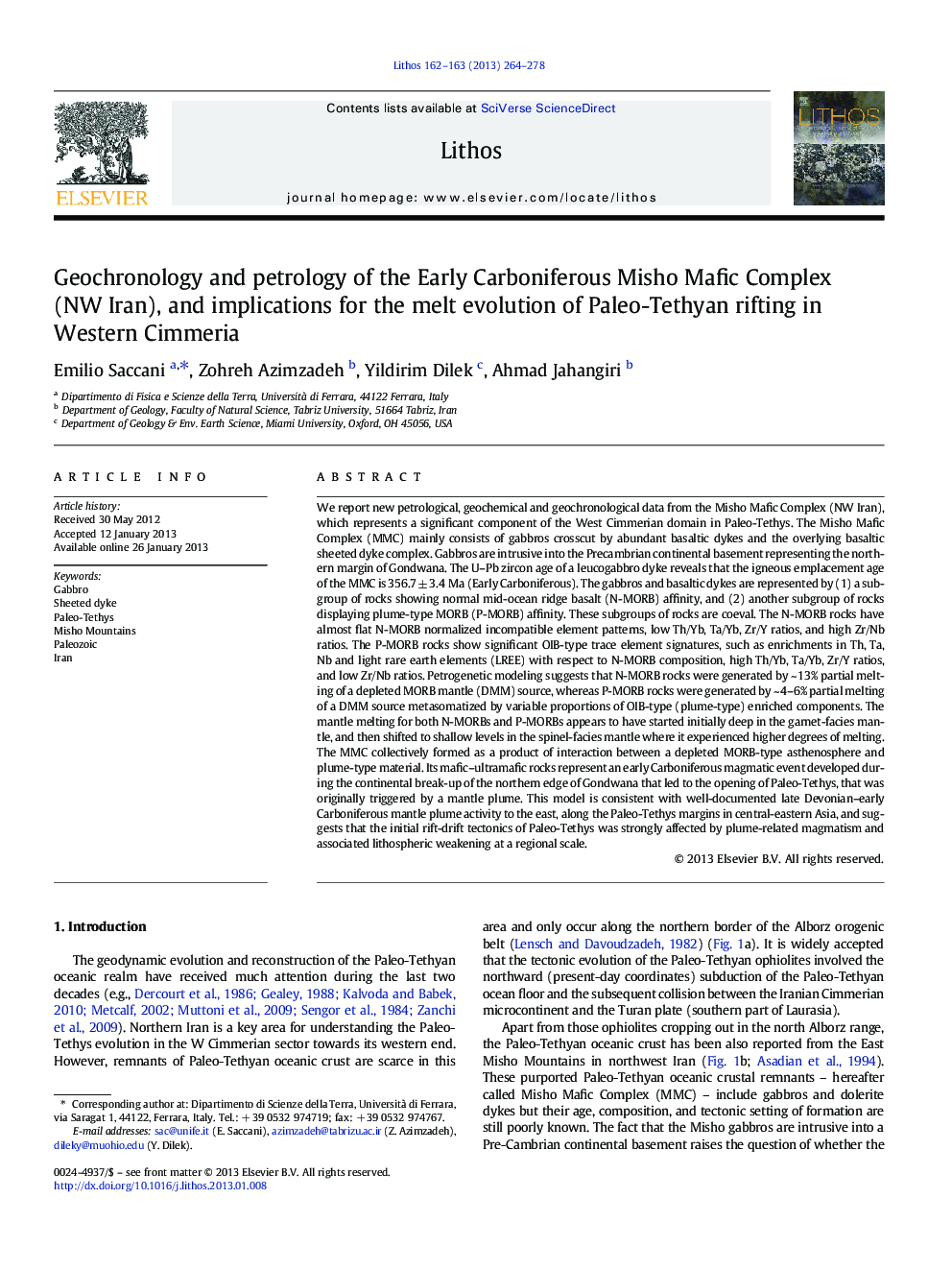| Article ID | Journal | Published Year | Pages | File Type |
|---|---|---|---|---|
| 4716296 | Lithos | 2013 | 15 Pages |
We report new petrological, geochemical and geochronological data from the Misho Mafic Complex (NW Iran), which represents a significant component of the West Cimmerian domain in Paleo-Tethys. The Misho Mafic Complex (MMC) mainly consists of gabbros crosscut by abundant basaltic dykes and the overlying basaltic sheeted dyke complex. Gabbros are intrusive into the Precambrian continental basement representing the northern margin of Gondwana. The U–Pb zircon age of a leucogabbro dyke reveals that the igneous emplacement age of the MMC is 356.7 ± 3.4 Ma (Early Carboniferous). The gabbros and basaltic dykes are represented by (1) a subgroup of rocks showing normal mid-ocean ridge basalt (N-MORB) affinity, and (2) another subgroup of rocks displaying plume-type MORB (P-MORB) affinity. These subgroups of rocks are coeval. The N-MORB rocks have almost flat N-MORB normalized incompatible element patterns, low Th/Yb, Ta/Yb, Zr/Y ratios, and high Zr/Nb ratios. The P-MORB rocks show significant OIB-type trace element signatures, such as enrichments in Th, Ta, Nb and light rare earth elements (LREE) with respect to N-MORB composition, high Th/Yb, Ta/Yb, Zr/Y ratios, and low Zr/Nb ratios. Petrogenetic modeling suggests that N-MORB rocks were generated by ~ 13% partial melting of a depleted MORB mantle (DMM) source, whereas P-MORB rocks were generated by ~ 4–6% partial melting of a DMM source metasomatized by variable proportions of OIB-type (plume-type) enriched components. The mantle melting for both N-MORBs and P-MORBs appears to have started initially deep in the garnet-facies mantle, and then shifted to shallow levels in the spinel-facies mantle where it experienced higher degrees of melting. The MMC collectively formed as a product of interaction between a depleted MORB-type asthenosphere and plume-type material. Its mafic–ultramafic rocks represent an early Carboniferous magmatic event developed during the continental break-up of the northern edge of Gondwana that led to the opening of Paleo-Tethys, that was originally triggered by a mantle plume. This model is consistent with well-documented late Devonian–early Carboniferous mantle plume activity to the east, along the Paleo-Tethys margins in central-eastern Asia, and suggests that the initial rift-drift tectonics of Paleo-Tethys was strongly affected by plume-related magmatism and associated lithospheric weakening at a regional scale.
Graphical abstractFigure optionsDownload full-size imageDownload as PowerPoint slideHighlights► U–Pb zircon age reveals an Early Carboniferous age for the Misho Mafic Complex. ► The Misho Mafic Complex records the early magmatic events of Paleo-Tethys. ► Interactions between MORB-type asthenosphere and plume-type material are documented. ► Rift-drift tectonics of Paleo-Tethys was influenced by plume-type activity. ► Rift-drift tectonics of Paleo-Tethys was associated with lithospheric weakening.
